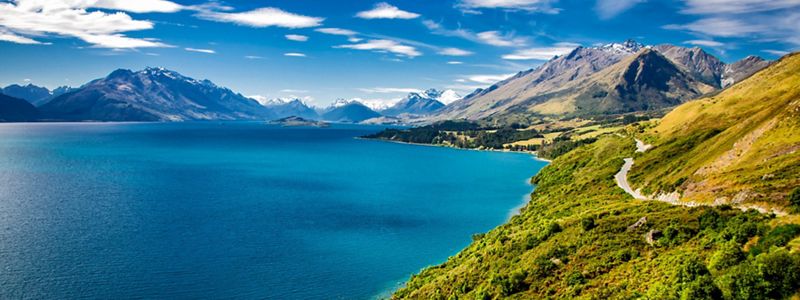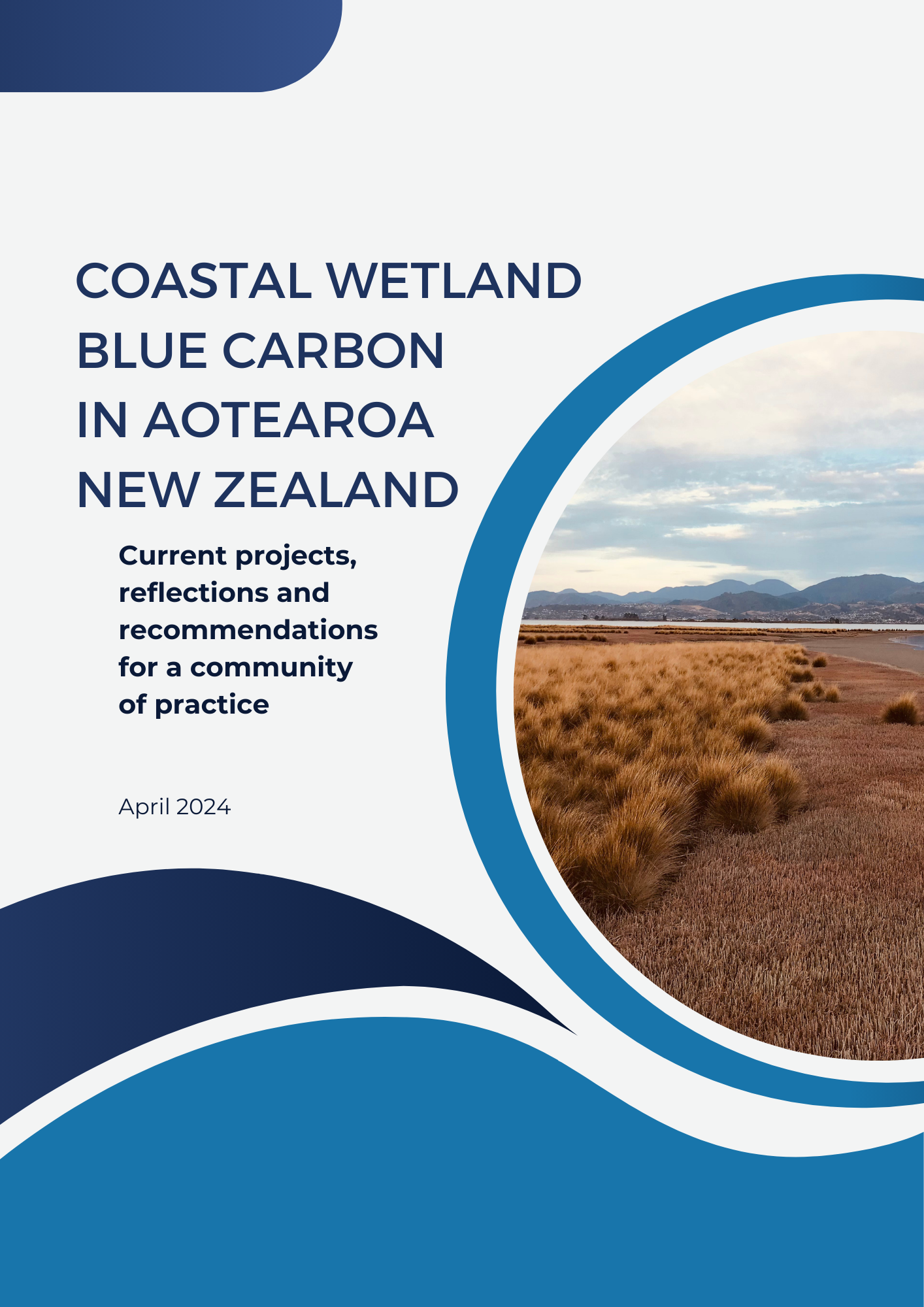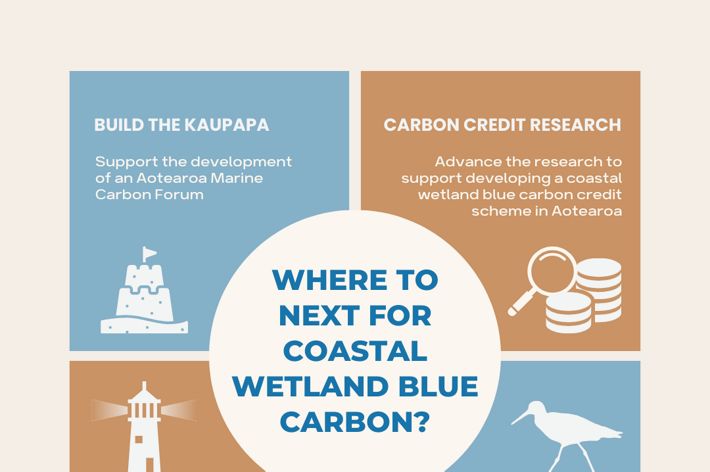Coastal Wetland Blue Carbon in Aotearoa New Zealand
Current Projects, Reflections and Recommendations for a Community of Practice
Researchers, practitioners, resource managers and mana whenua participated in a series of hui in 2023 to share knowledge about current coastal wetland blue carbon projects and aspirations for the future, supported by the Department of Conservation and The Nature Conservancy Aotearoa New Zealand (TNC NZ).
One very valuable output from the hui is a project catalogue. A timeline and mapping exercise built a picture of milestones and progress from ongoing coastal wetland blue carbon projects in Aotearoa. The catalogue also identified initiatives that would enhance carbon sequestration science, covering areas such as carbon stocks and sediment dynamics, and including broader, national-level projects, such as mapping coastal wetlands, which will be crucial for providing a comprehensive national overview.
Next steps
The participants identified several next steps to accelerate this work, including:
- support for a funded marine carbon forum to coordinate projects,
- a national coastal wetland blue carbon strategy,
- continued support for work underway on market development for carbon credits,
- maintaining the project catalogue as a living resource,
- development of a decision tree to support protection and restoration,
- identifying synergies and opportunities between existing mapping projects,
- involving local communities, and
- enabling mana whenua to take a lead role.
The report was prepared by Helen Kettles, Department of Conservation; Olya Albot, The Nature Conservancy Aotearoa New Zealand and Victoria University of Wellington; Kaeli Lalor, The Nature Conservancy Aotearoa New Zealand; and Scott Nicol, Growing Dialogue on behalf of the coastal wetland blue carbon “community”.
Download
Download the full report or the executive summary.
DOWNLOAD Download the Executive Summary
Coastal Ecosystems and Climate Change
Over the past decade, interest has significantly increased—both globally and within Aotearoa New Zealand—in using coastal ecosystems as a solution to help mitigate the effects of climate change and increase community resilience.
New Zealand has greenhouse gas (GHG) emissions reduction targets for 2030 and 2050, a primary focus of which is reducing gross GHG emissions (Ministry for the Environment, 2022). However, nature also plays a crucial role in removing some of the carbon that has already been emitted.
Improving the health of coastal wetlands (saltmarsh, mangroves, seagrass and unvegetated tidal flats) will not only increase their ability to capture and store carbon (referred to as blue carbon sequestration) but also increase protection against storm surges, improve water quality, support cultural resources and practices, enhance fish nurseries and increase biodiversity.
More Information
Creating connections across the coastal blue carbon sector (media release, June 2023)
Read the ReleaseThere is significant potential to accelerate this work in Aotearoa New Zealand. Increased interest in coastal ecosystems has seen a relatively ad hoc growth of coastal wetland blue carbon research and implementation in Aotearoa. This research has yielded some high-quality, high-impact outcomes. There is scope to advance this with an overarching national-scale strategy, which will support connections between research practitioners, mana whenua and communities (as has happened with the South Australia Blue Carbon Strategy).
Scientists, planners and communities have already established connections through various past coastal wetland blue carbon hui/meetings run by the Department of Conservation, Ministry for the Environment, The Nature Conservancy Aotearoa New Zealand and the Tasman Environmental Trust.
In 2023, DOC and TNC NZ brought together the coastal wetland “community” to further progress strategic outcomes. This report summarises the findings of this process.
Contact
The Nature Conservancy Aotearoa New Zealand
Olya Albot
Nature-based Solutions Project Manager
olya.albot@tnc.org
Department of Conservation—Te Papa Atawhai
Helen Kettles
Estuaries, blue carbon and coastal sediment national roles
Technical Advisor—Marine ecology, Matanga Matai Ahu Moana
hkettles@doc.govt.nz
We Can’t Save Nature Without You
Sign up to receive monthly conservation news and updates from New Zealand.



